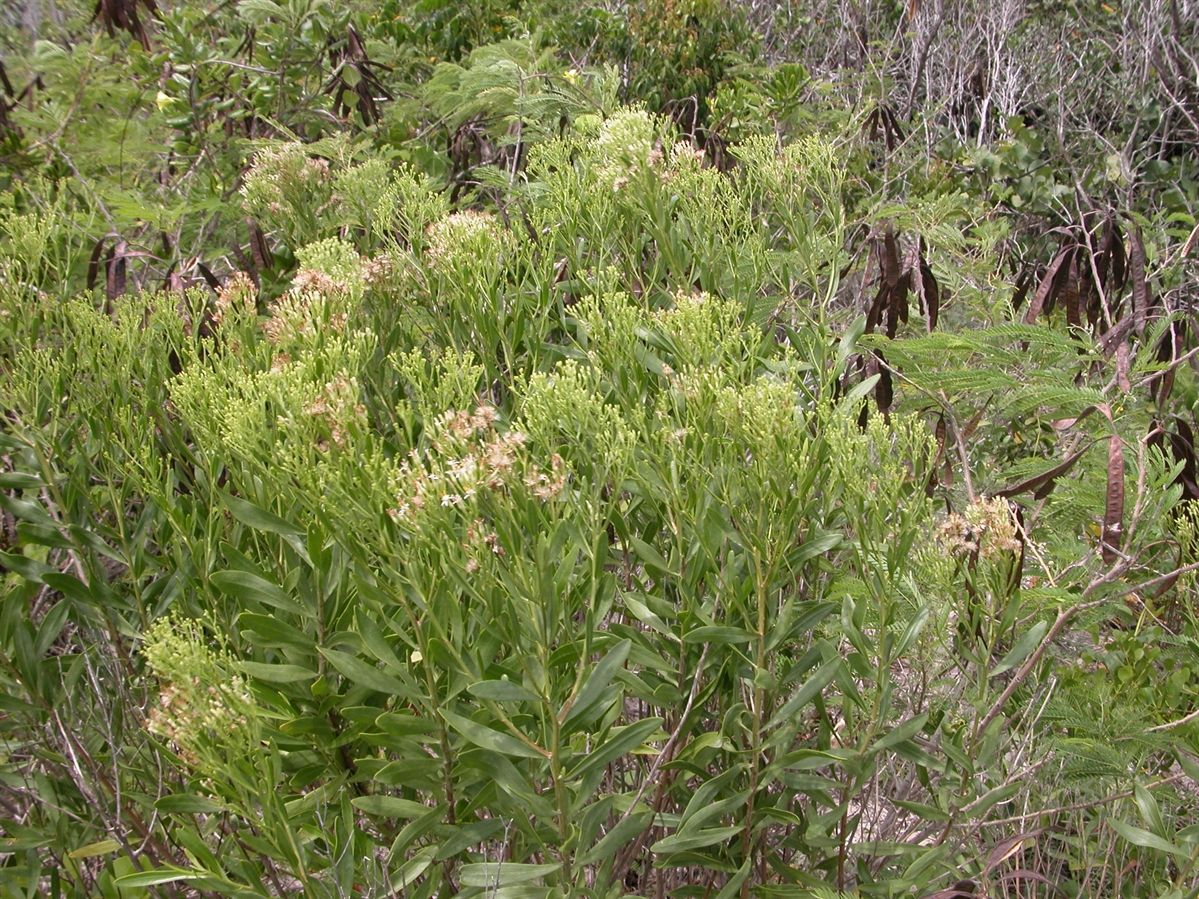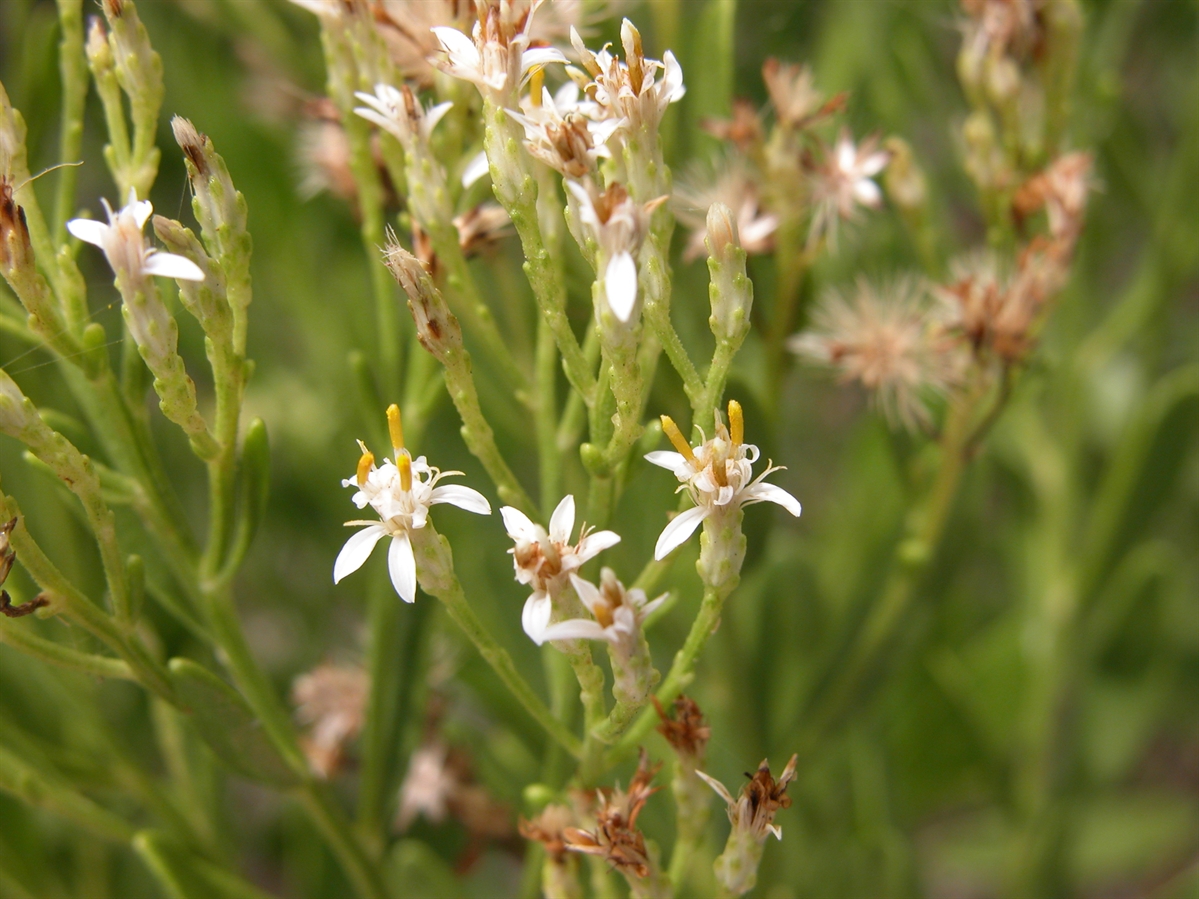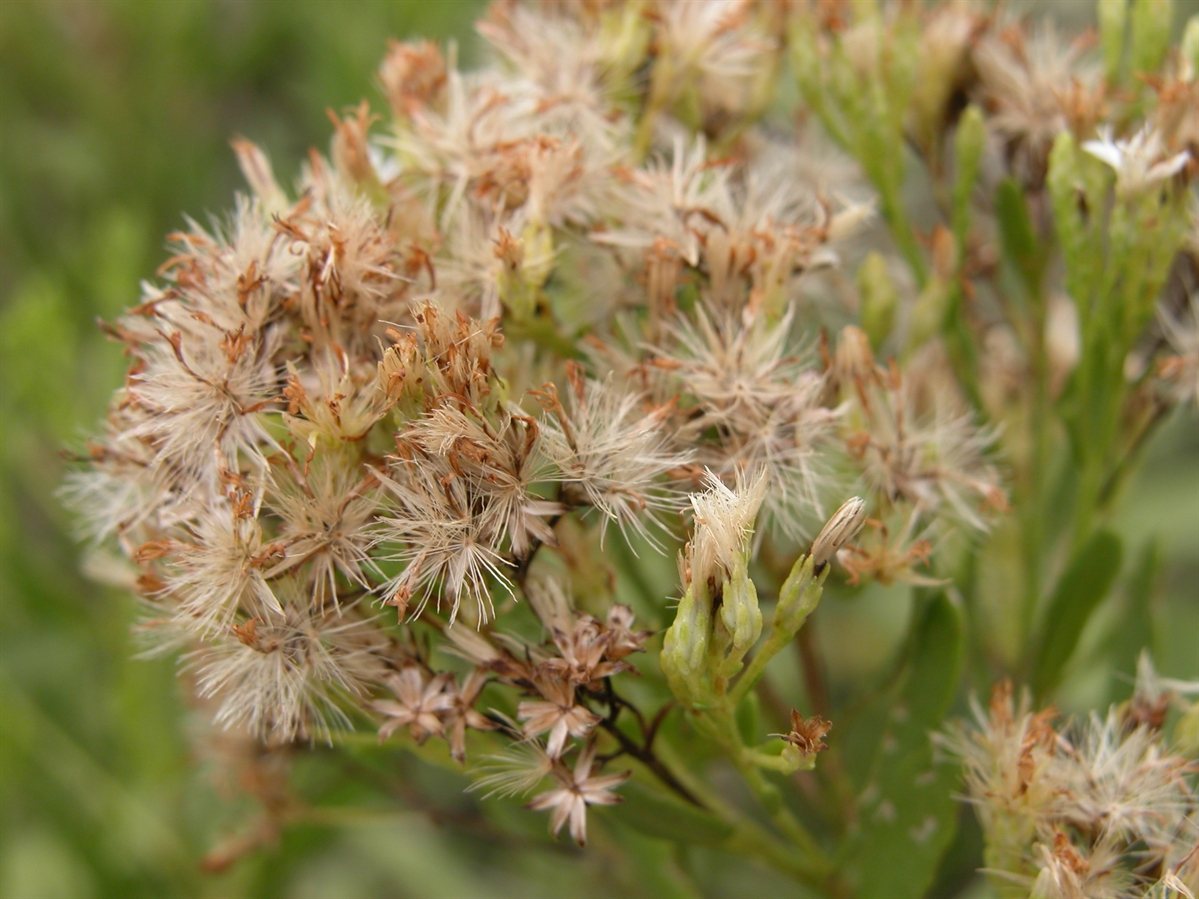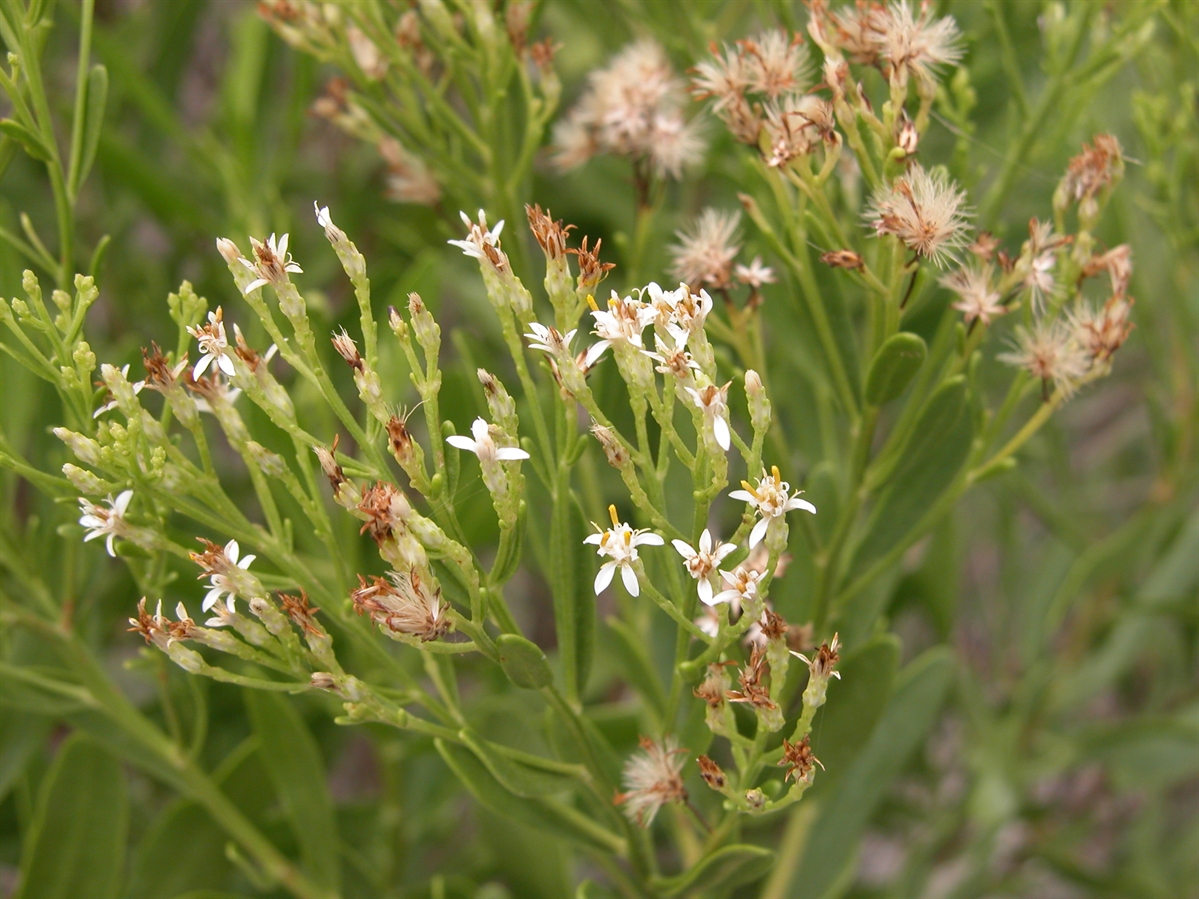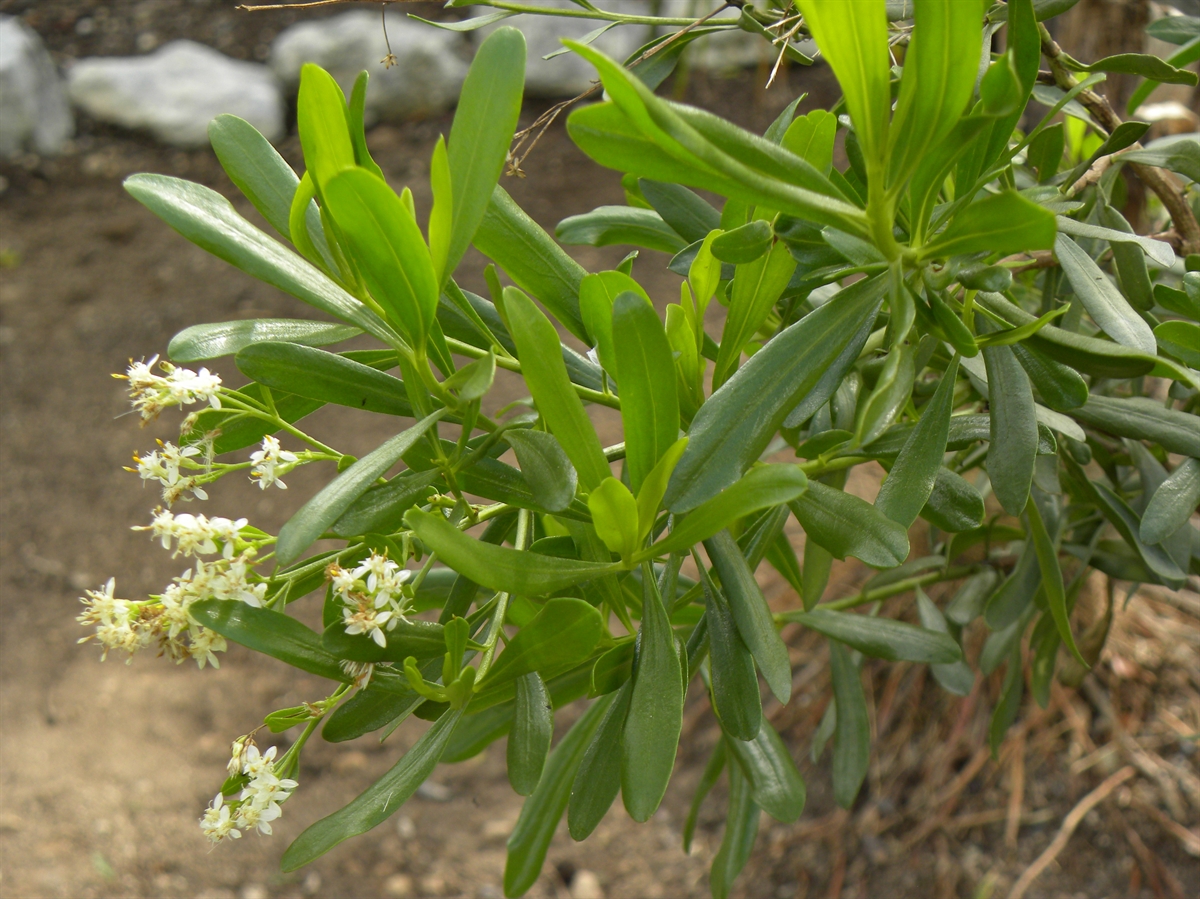Habit: Gundlachia corymbosa grows as a semi-woody herb/shrub to 2 meters in height (typically 1 meter). The leaves are arranged alternately to 9 cm in length, liner to oblanceolate, and rounded or mucronate leaf apex and an entire margin.
The actinomorphic and zygomorphic flowers are arranged in panicles of heads. The heads are subtended by an involucre made of 4-5 series of phyllaries. The actinomorphic flowers are in the center of the head with the zygomorphic flowers along the outer edge of the head.
The complete, perfect, actinomorphic flowers have a calyx modified into a pappus. The corolla has 5 white, fused petals. There are 5 stamens. The ovary is inferior with a single locule and seed. The fruit is an achene at maturity retaining the pappus to aid in dispersal.
The complete, perfect, zygomorphic flowers have a calyx modified into a pappus. The corolla is fused into a single white structure open along one suture. There are no stamens. The ovary is inferior with a single locule and seed. The fruit is an achene at maturity retaining the pappus to aid in dispersal.
Habitat: Gundlachia corymbosa grows in Dry Broadleaf Evergreen Formation – Shrublands/Dwarf Shrublands, commonly on a sand substrate. It also grows in Human Altered environments (roadsides).
Distribution: Gundlachia corymbosa occurs on all island groups within the Lucayan Archipelago as well as the Caribbean region. It is considered endemic to the Caribbean.
Medicinal/Cultural/Economic usage: Gundlachia corymbosa is used in the Lucayan Archipelago to treat pain, dermatological problems (blisters from Poison wood and Manchineel), as well as for colds and flu.
